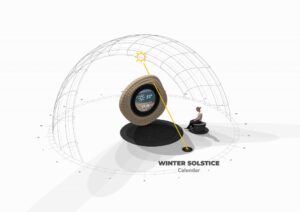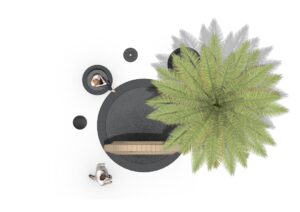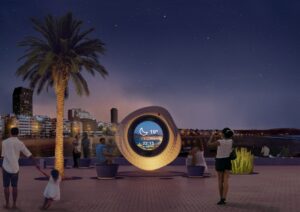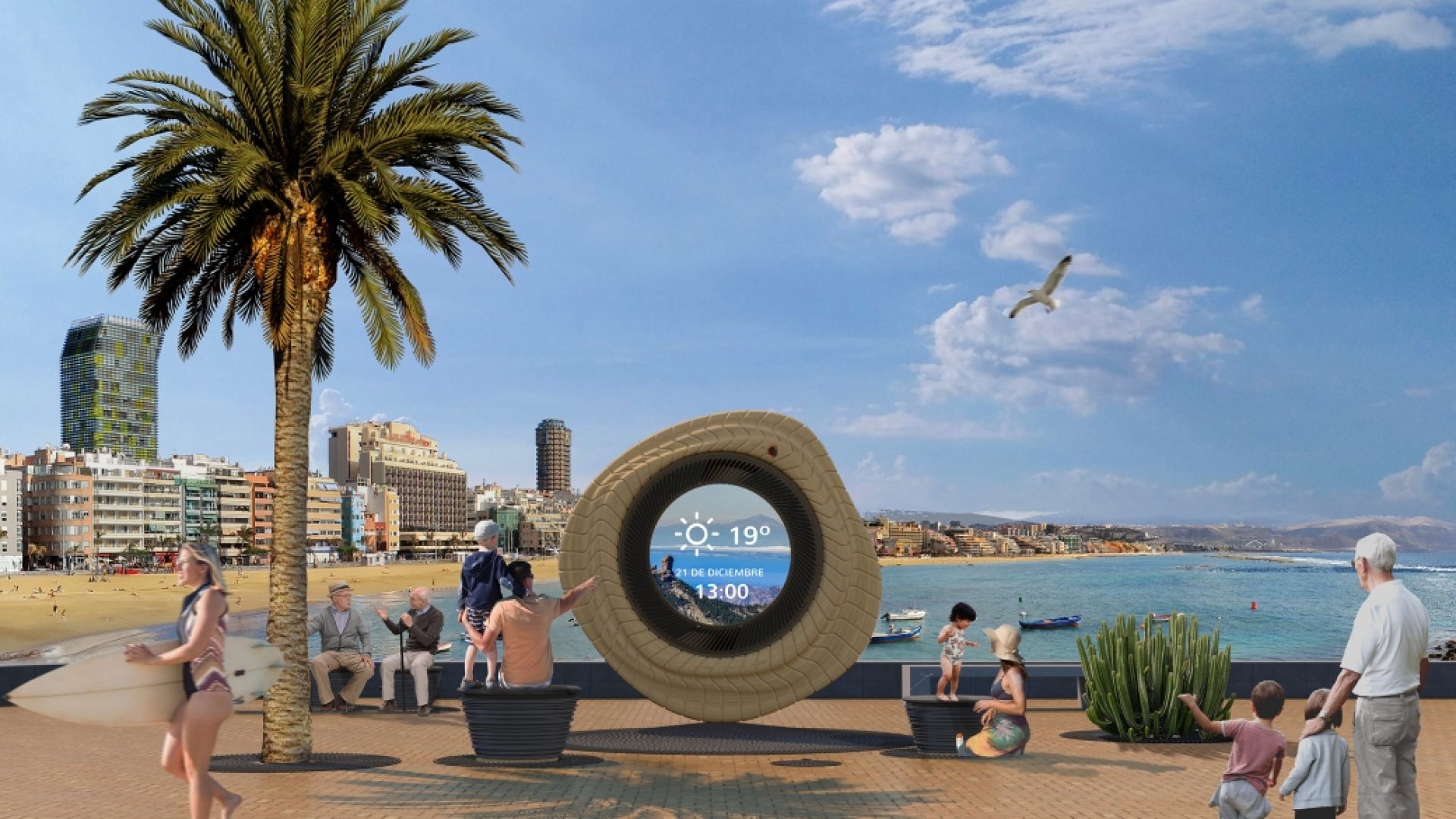
A Digital Seafront Totem As The Outcome Of Biourbanism
The complexity of our cities is given by strata of architecture, coming from different times and movements, sometimes able to cooperate and to adjust or show flexibility to new societies and evolved environments.
Concieving new designs for the future is essential to recognize the complexity of urbanism in its entirety, as a living and evolving organism that hosts us all. This school of thought can be explained and delineated by the discipline of Biourbanism. A practice consisting of envisioning cities and their spaces as multiple distinct layers that should be emphasized and rationalized harmonically.
Biourbanism challenges how we look at the urban fabric, regarding it as a living entity built by several systems and dynamic interactions that occur in non-linear manners. The emerging scheme of this design intricacy should become the target to be analyzed and addressed rather than its singular elements.

This new design movement is not a lonely voice, but it is a conversation between approaches that integrate architecture, design, and urbanism to life sciences such as statistical mechanics, thermodynamics, operations research, and ecology. The collective voices form a network of designers, philosophers, mathematicians, and biologists working together towards a considerate configuration of the urban fabric.
The discipline of Biourbanism and its practitioners in the design world are all making contributions towards the same objectives, operating and developing four imperative parts of the urban system: expanding the social-environmental spaces of deep ecology, enhancing the environment through its inhabitants’ needs and their surrounding ecosystem, assisting in the transition from fossil fuels to a new organizational model of advancement, and finally strengthening and protecting the original interaction between the cultural and physical element of the urban fabric.
Designs that pursue these ideologies through their processes and implementation within landscapes can be considered examples of Biourbanism, contributing to each individual’s evolution without being hostile to the environment. Such designs become part of an urban planning platform that promotes regenerative interactions between cities and the natural systems they depend on.

LPA Studio is an architectural practice based in Spain that embraces Biourbanism and develops projects capable of interacting with the organic development of cities, particularly focusing on subtropical regions and territories with semi-arid and Mediterranean climates.
The focus on a particular type of design climate allows the practice to channel the understanding of the environmental and urban systems more specifically and develop projects with extensive expertise on integration methods within the several biotic and abiotic layers of a city. This relevant philosophy reveals how a social, regional division is only one layer of a bigger scheme, but “grand regionalism of regions classified by climates” should be equally important, being climate regimes another way to discern divergencies between urban realms.
One of the latest projects embracing the biourbanist philosophy is the Digital Totem for the Canary Islands beaches, designed by LPA studio and commissioned by the Dirección General de Infraestructura Turística Gobierno de Canarias. This circular 2.5m tall wooden beacon interacts with its surroundings and the history of the Canary Islands at several levels.
The digital beacon is composed of two faces: a northern one with a large screen broadcasting real-time data about the islands’ environment and services available for tourists and general information for the inhabitants. The southern side of the digital totem presents a photovoltaic module that powers the piece through the abundant solar energy the islands can offer.
The interface of the totems employs wooden carvings to re-interpret the indigenous ceramic art of worshipping the god of the sun “Magheq”, represented with a different type of craft for each of the eight islands’ (Gran Canaria, Fuerteventura, Lanzarote, La Graciosa, El Hierro, La Gomera, La Palma, and Tenerife) enhancing the difference and richness of territorial artistic value.
Such designs become part of an urban planning platform that promotes regenerative interactions between cities and the natural systems they depend on.
The totems interact with their surroundings at different levels. They celebrate the history and creativity of the Canary Islands while simultaneously becoming objects of environmental awareness that transform data into visuals for the viewers. These complex objects are capable of renovating the old worshipping relationship the islands had with the sun by translating it into a critical energy resource. The evolution of the culture’s past into the knowledge and expertise of the present fosters a space that connects art, history, and technology.
A Biourbanist approach can also be perceived in the fabrication of the totems. The main material comprising the ring is wood originating from sustainable sources, an element capable of sequestering CO2 rather than releasing it. Despite being made of steel, the internal structure of the beacon would come from recycled elements, suggesting a future for the islands in which circularly reusing building materials would become the norm.
The design of the totems can also operate as a sundial via a perforation on its top that lets the sun through and marks the time of the day on the floor. This function provides another moment of interaction between the sun and the passers-by. LPA studio converts the resulting semicircle of shade in front of the northern face into a space defined by urban furniture like seatings, charging stations, plants, street lamps and bins, which all sit on an artistically stone paving that allows people to interact, rest and have protection from the sun.
The eco-design approach used by LPA studio has made it possible for a project of just 30m2 to receive the Architizer A+Product Award 2021 for the Landscape Category and the Grand Prix du Design Awards 2021 in the Landscape Architecture Category. LPA studio employs design as a tool in a defined urban and territorial framework to develop the space. It allows people to glimpse diverse and optimistic routes towards the future of urbanization at the economic, environmental, and social levels.
These achievements were also possible because the Spanish architectural office, part of the Biourbanism scheme, applies a participative methodology that defines the emotional and physical well-being of the users through people’s feedback and psychological, social, and economic reactions.
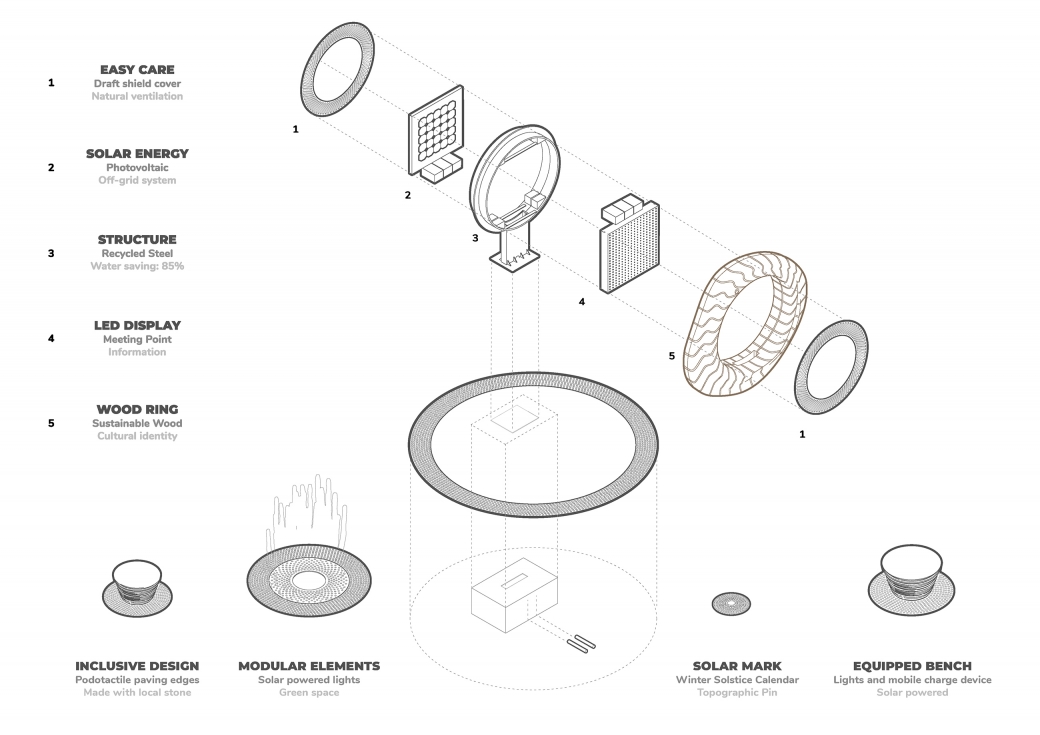
In Biourbanism, as in this project, every decision is locked within a bigger framework meant to strengthen a complex urban and ecological system. As a living organism, the concept of the urban fabric in Biourbanism is in a continuous exchange of materials, culture, energy and information with its surroundings. Space, and its intrinsic components, are only managed by human activities, but it is the architect, designer and urbanist that has to understand how to foster these interactions rather than debilitate them.
The scope of Biourbanism differs from the previous attempts to link ecology to the city as this new discipline bridges architecture to the environment and to people through the use of the latest technological developments and discoveries in the life sciences, creating urban spaces that can address simultaneously the human and non-human inhabitants, the environment and the artistic aspects of the brain and soul, acknowledging that is not a linear process nor linear outputs but a layering of complex systems.
As Antonio Caperna and Stefano Serafini, part of the International Society of Biourbanism, said, the relationship between architecture, science and the body is the key to evolve this emerging discipline; the interests should shift from beauty to the way architecture works and have a response to the body. Architecture has to get in touch with the existing surroundings and historical strata of the territory it sits on.
Urban fabrics have become complex systems of data, people and ecologies; design cannot be seen anymore as a singular element being inserted into a piece of the urban landscape but as an entity in connection to a living and evolving organism. LPA studio and the design of the Canary Islands totems represent these dynamic and complex conditions: they are not just one piece of infrastructure, but through the understanding of a digital intelligence interacting within the urban fabric they become systems in communication with everything that surrounds them and can successfully evolve cityscapes.

